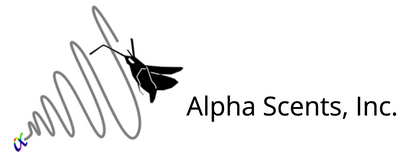NEW Lure for the Leaffooted Bugs
Western Leaffooted Bug, Leptoglossus zonatus
South and Central America, Mexico, and Southwestern United States. HOSTS Nut crops, Almonds, Pistachios, Pomegranates, Oranges, Corn, Cotton, Eggplant, Peach, Pecan and Tomatoes.
Adults are present throughout the year. They Live over winter in surrounding fields of weeds or under bark of the trees and emerge in the spring. Female can live for over 70 days and males over 50 days. Bugs move from crop to crop over time, i.e. they start from almonds then move to pistachios and later to pomegranates. They can transmit pathogenic yeast Nematospora coryli on oranges causing fruit staining and premature drop and plant pathogen Herpetomonas macgheei, a trypanosomatid protozoan on other plants. Adults over winter live in protected areas – under tree bark, in animal nests, humane shelters and homes.

TRAP TO USE Yellow Panel Trap Yellow Panel Trap coated with Teflon.
Lure to USE: Western Leaffooted Bug Lure – Alpha Scents


MONITORING STRATEGY Place the traps within three rows close to the edge of the trap. Hang the trap from the shepherd hook so the collection cup is 30 cm above the ground. Placing more traps can result in lowering bug population. Check with Cooperative Extension or Master Gardener for local information and recommendations.
Western Conifer Leaffooted Bug, Leptoglossus occidentalis
Native to Western United States and Canada, now spread throughout Eastern North America, Europe, Middle East Asia and Argentina

These are pests of seeds of Most of the conifers: Douglas-Fir, Pine, Spruce, Fir, Cedar, Juniper and also Pistachios. The WCLFB is serious pest of conifer seeds. Native to North America, highly invasive to Europe, Middle East Asia and North Africa. They feed on young and mature seeds. If not controlled in seed orchards they can cause 80% or higher seed loss. In most areas there is one generation per year. In Southern US and Mexico, they can have up to 3 generation. Adults emerge from late May to early June. They feed on young and mature seeds. If not controlled in seed orchards they can cause 80% or higher seed loss. In most areas there is one generation per year. In Southern US and Mexico, they can have up to 3 generation. Adults overwinter in protected areas – under tree bark, in animal nests, humane shelters and homes.
TRAP TO USE Yellow Panel Trap Yellow Panel Trap coated with Teflon.
Lure to USE: Western Conifer Leaffooted Bug Lure – Alpha Scents


MONITORING STRATEGY Place the traps within three rows close to the edge of the plantation. Hang the trap from the shepherd hook so the collection cup is 30 cm above the ground. Placing more traps can result in lowering bug population. Check with Cooperative Extension or Master Gardener for local information and recommendations.


